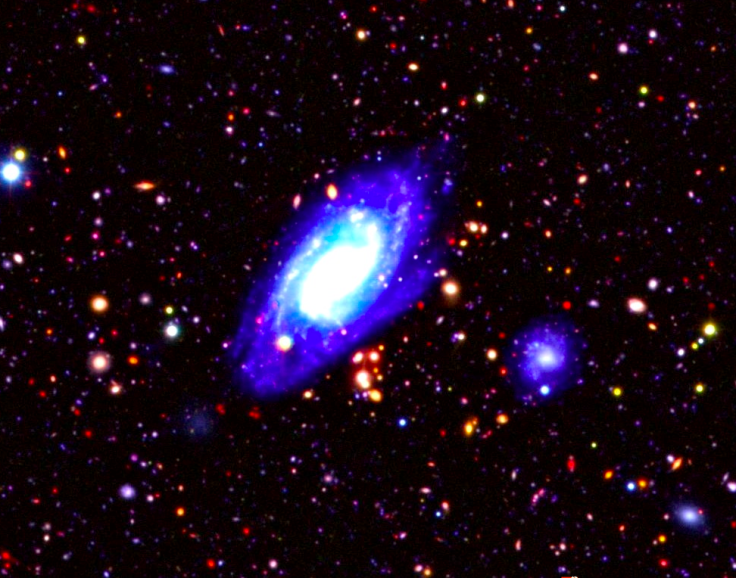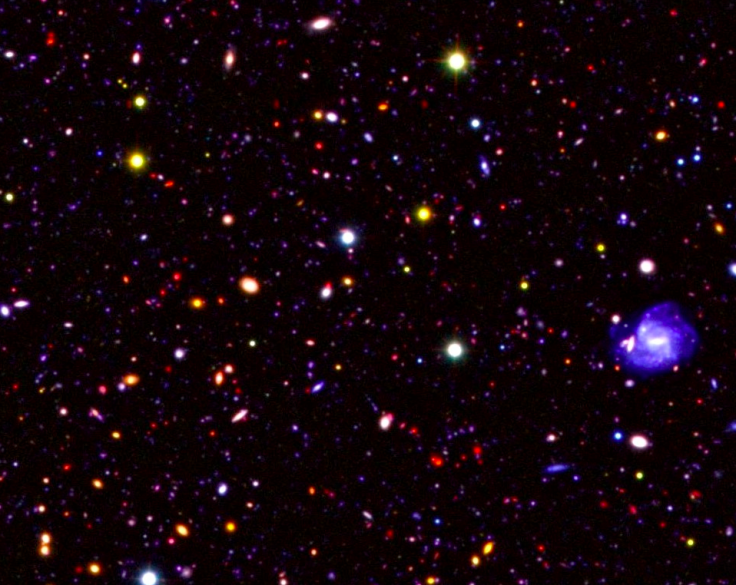Spectacular pictures of the distant universe show how galaxies were over 9 billion years ago
The latest deep images allow scientists to see very distant galaxies, looking far back in time to within 1 billion years after the Big Bang.
Spectacular new infrared images of the distant Universe provide the deepest view to date of an area of sky four times the size of the full Moon. Over 250,000 galaxies have been detected in the images, providing researchers with an extremely valuable tool to study the formation of the gravitationally-bound systems of stars.
The images are the results of more than ten years of data-collecting as part of a survey called the 'Ultra-Deep Survey' (UDS), led by scientists from the University of Nottingham. Since 2005, the researchers have used the United Kingdom Infrared Telescope (UKIRT), located at an altitude of 4194 metres (13760 feet) above sea level on Hawaii. They observed the same patch of sky repeatedly, building up more than 1,000 hours of exposure time in infrared light.
"The stars within galaxies emit most of their light at optical wavelengths, but for very distant galaxies this light is shifted into the infrared due to the cosmological expansion of the Universe. Near-infrared surveys are therefore vital to get a complete view of galaxies in the early Universe", Professor Omar Almaini, who led the study, told IBTimes UK.

The aim of the project was get the deepest possible view of the universe to study how and when galaxies are formed. Because of the finite speed of light, the most distant galaxies are also observed very far back in time, and this new perspective on the distant universe can help scientists trace the evolution of galaxies over billions of years.
"We are aiming to understand how galaxies form, and how they evolve through time to produce the beautiful structures we see around us today. With our latest deep images we can see very distant galaxies, looking far back in time to within 1 billion years after the Big Bang. Other surveys have reached these depths before, but not over such a large area of sky", Almaini explains.

In total, he and his team identified more than 250,000 galaxies on the images. Most of the galaxies in our image are seen over 9 billion years ago, several billion years before the Earth was formed - the most distant ones being observed in the first billion years after the Big Bang, over 13 billion years back in time.
"By surveying a large area we can now study distant galaxies in large numbers, so we have the statistical power to compare galaxy populations at different stages in the history of the Universe, to observe how they change and evolve through time. We can also study their large-scale structure, to understand how they trace the underlying cosmic web of dark matter", Almaini added.
Previously, the UDS project had already yielded a lot of interesting data about galaxies, including measurements of the build-up of galaxies through cosmic time, and studies of the large-scale distribution of galaxies to weigh the mysterious 'dark matter' that pervades the cosmos.
© Copyright IBTimes 2025. All rights reserved.






















